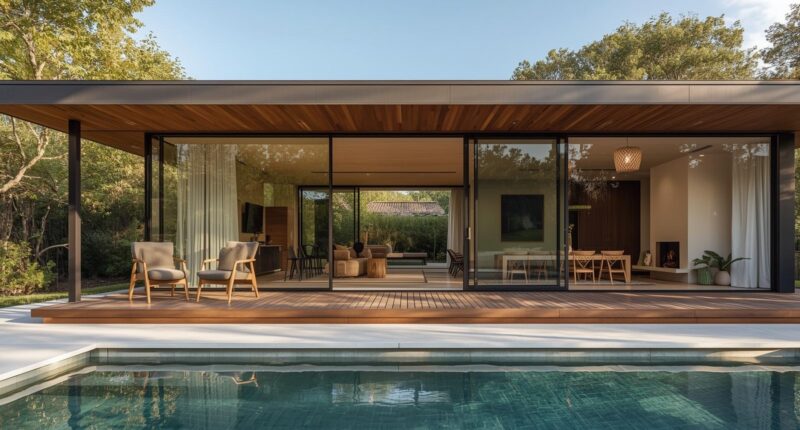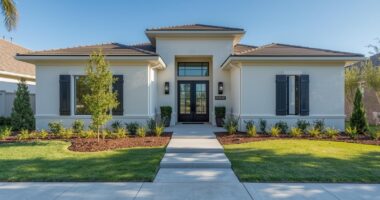How to Choose a Home That Fits Your Lifestyle
Buying a home is one of the most important decisions you’ll ever make. But beyond price and location, the key to long-term satisfaction is finding a property that truly complements the way you live. Whether you’re a busy professional, a growing family, or someone seeking peace and privacy, knowing how to choose a home that fits your lifestyle can make all the difference.
In this guide, we’ll explore essential factors, tips, and trends to help you select a home that supports your daily routines, values, and future goals.
Why Lifestyle Matters When Choosing a Home
A home is more than just walls and a roof — it’s where your life unfolds. Your lifestyle determines your space needs, neighborhood choice, and amenities that enhance comfort.
People today are moving away from the “bigger is better” mindset and focusing on homes that align with work-life balance, sustainability, and convenience.
(📌 Related Link: How Lifestyle Trends Are Shaping Modern Real Estate)
Step 1: Understand Your Lifestyle Needs
Before house hunting, ask yourself:
-
How do you spend your weekdays and weekends?
-
Do you work from home or commute daily?
-
Do you entertain guests often?
-
What are your hobbies or routines?
Identifying these factors helps you narrow down property types, layouts, and neighborhoods.
Examples:
-
Remote workers may need a quiet space with a home office.
-
Fitness enthusiasts might prefer proximity to parks or gyms.
-
Families may prioritize good schools and safe communities.
Step 2: Choose the Right Location
The location of your home directly influences your lifestyle. Consider proximity to:
-
Your workplace or business.
-
Schools, hospitals, and grocery stores.
-
Entertainment and recreation centers.
-
Public transportation or highways.
A good location not only adds convenience but also enhances long-term property value.
Step 3: Match the Home Type with Your Lifestyle
1. Apartments or Condos
Ideal for singles or young couples who value convenience and low maintenance.
2. Townhouses
Offer more space and privacy while keeping community amenities.
3. Single-Family Homes
Perfect for families wanting outdoor space, privacy, and room to grow.
4. Rural or Suburban Homes
Appeal to those seeking peace, nature, and more land.
Step 4: Prioritize Key Home Features
When viewing properties, focus on features that align with your lifestyle:
| Feature | Best For | Why It Matters |
|---|---|---|
| Home Office Space | Remote workers, entrepreneurs | Supports productivity and work-life balance |
| Open Floor Plan | Families, entertainers | Enhances connection and visibility |
| Smart Home Technology | Tech-savvy buyers | Improves efficiency and security |
| Outdoor Area or Garden | Nature lovers, families | Encourages recreation and relaxation |
| Energy-Efficient Design | Eco-conscious homeowners | Saves money and benefits the environment |
Step 5: Consider Future Plans
Think long-term. Will this home meet your needs five or ten years from now?
-
Growing families may require more bedrooms or a larger yard.
-
Empty nesters might prefer downsizing to reduce maintenance.
-
Investors could look for properties with resale or rental potential.
By considering your future goals, you can avoid the hassle of moving frequently.
Step 6: Evaluate the Neighborhood Lifestyle
Your community is just as important as your home. When choosing a neighborhood, look for:
-
Community Culture: Is it family-friendly, youthful, or quiet?
-
Amenities: Access to restaurants, parks, gyms, and shopping.
-
Safety: Low crime rate and good lighting.
-
Commute Time: Shorter commutes mean more time for family or hobbies.
➡️ Tip: Research local lifestyle rankings on Niche.com.
Step 7: Assess Affordability and Maintenance
A home should fit your financial lifestyle too. Beyond the purchase price, consider:
-
Property taxes and homeowner association (HOA) fees.
-
Maintenance and repair costs.
-
Utility expenses and insurance.
A larger home with a big yard may sound appealing, but if it requires constant maintenance, it might not suit your daily routine or budget.
Table: Lifestyle-Based Home Selection Examples
| Lifestyle Type | Ideal Property Type | Key Features to Look For |
|---|---|---|
| Young Professional | Condo or Apartment | Smart home tech, city access, gym, minimal upkeep |
| Family with Kids | Single-Family Home | Extra bedrooms, safe neighborhood, yard space |
| Retiree | One-Story Home or Villa | Low maintenance, health services nearby |
| Entrepreneur / Remote Work | Townhouse or Modern Condo | Home office, high-speed internet, parking |
| Nature Enthusiast | Suburban or Countryside Home | Garden, eco-features, outdoor living area |
Step 8: Don’t Forget Emotional Connection
While practical features are important, don’t overlook the emotional aspect of buying a home. When you step inside, ask yourself:
-
Can I picture myself living here happily?
-
Does this space feel comfortable and inspiring?
A home that fits your lifestyle should not only meet your needs but also reflect your personality and aspirations.
Final Thoughts
Knowing how to choose a home that fits your lifestyle is about more than location or price — it’s about creating a space that enhances your daily life.
From eco-friendly homes for sustainable living to smart apartments for digital nomads, real estate in 2025 is all about personalization. Take time to define what truly matters to you, research neighborhoods carefully, and invest in a property that supports your unique way of living.
A well-chosen home doesn’t just shelter you — it empowers your lifestyle.









